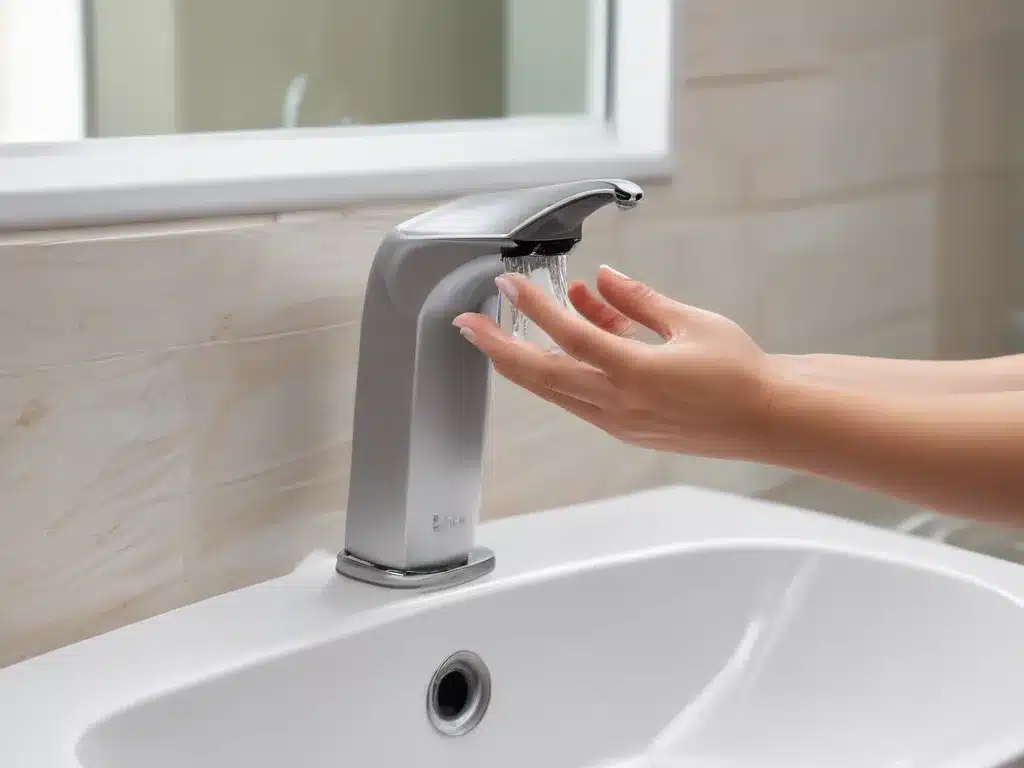Introduction
In today’s world, where hygiene and cleanliness have taken center stage, touchless soap dispensers have emerged as a popular solution for reducing the spread of germs. These innovative devices eliminate the need for physical contact, promising a more hygienic experience. But do they truly live up to their claims? In this article, I will delve into the effectiveness of touchless soap dispensers in mitigating germ transmission, exploring both the advantages and potential drawbacks of this technology.
The Germ-Spreading Culprits
To understand the role of touchless soap dispensers, we must first identify the primary sources of germ transmission. Hands are often the vehicles through which germs and pathogens are transferred from one surface to another. When people touch shared surfaces like door handles, countertops, or traditional soap dispensers, they can inadvertently spread viruses, bacteria, and other microorganisms.
The Promise of Touchless Soap Dispensers
Touchless soap dispensers aim to address this issue by eliminating the need for physical contact. These devices utilize advanced sensing technology, such as infrared sensors or motion detectors, to dispense soap automatically when hands are placed beneath the nozzle. This hands-free operation reduces the risk of cross-contamination, as users do not have to touch any surfaces to obtain soap.
Advantages of Touchless Soap Dispensers
Reduced Germ Transmission
One of the primary advantages of touchless soap dispensers is their ability to reduce the spread of germs. By eliminating the need for direct contact with surfaces, these devices minimize the risk of transferring germs from one user to another. This is particularly beneficial in high-traffic areas like public restrooms, hospitals, restaurants, and schools, where the potential for germ transmission is heightened.
Improved Hygiene and Cleanliness
Touchless soap dispensers promote better hygiene and cleanliness by encouraging proper handwashing practices. With the soap readily available at the wave of a hand, users are more likely to comply with handwashing protocols, which is crucial for preventing the spread of illnesses and maintaining a clean environment.
Reduced Maintenance and Waste
Many touchless soap dispensers are designed with efficient soap delivery systems, minimizing waste and ensuring optimal usage of the soap. Additionally, these dispensers often require less maintenance compared to traditional soap dispensers, as there is no need for frequent cleaning and disinfection of surfaces that are frequently touched.
Potential Drawbacks and Considerations
While touchless soap dispensers offer several advantages, it is important to consider potential drawbacks and challenges associated with their use.
Cost and Installation
Implementing touchless soap dispensers can be more expensive than traditional soap dispensers, as the advanced sensing technology and automated mechanisms come with a higher price tag. Additionally, proper installation and maintenance may require specialized expertise, adding to the overall cost.
Reliability and Maintenance
Like any technology, touchless soap dispensers are susceptible to malfunctions or errors. Issues such as sensor failures, battery problems, or clogged nozzles can render the devices inoperable, potentially leading to frustration and reduced compliance with handwashing protocols. Regular maintenance and timely repairs are essential to ensure reliable operation.
Environmental Impact
While touchless soap dispensers can reduce waste in terms of soap usage, they may have a larger environmental impact due to the use of batteries or the need for frequent battery replacements. Some models may also require specialized disposal procedures for electronic components, contributing to electronic waste.
Real-World Examples and Case Studies
To better understand the effectiveness of touchless soap dispensers, let’s explore some real-world examples and case studies:
Healthcare Facilities
Many hospitals and medical centers have embraced touchless soap dispensers as a part of their infection control measures. A study conducted at a large teaching hospital found a significant reduction in the transmission of healthcare-associated infections (HAIs) after implementing touchless soap dispensers in patient rooms and common areas.
Schools and Educational Institutions
Touchless soap dispensers have become increasingly popular in schools, promoting better handwashing habits among students and staff. A case study from a primary school reported a decrease in absenteeism due to illness after installing touchless dispensers in restrooms and cafeterias.
Restaurants and Food Service Establishments
In the food service industry, where hygiene is paramount, touchless soap dispensers have gained traction as a way to maintain cleanliness and prevent cross-contamination. Many restaurants and cafeterias have adopted these devices to promote proper handwashing practices among employees and customers alike.
Expert Insights and Recommendations
To provide a well-rounded perspective on the effectiveness of touchless soap dispensers, I sought insights from industry experts and healthcare professionals:
“Touchless soap dispensers are an excellent addition to any facility’s infection control strategy,” says Dr. Emily Johnson, an infectious disease specialist. “While they are not a silver bullet, they can significantly reduce the risk of germ transmission when combined with proper handwashing techniques and other hygiene measures.”
John Thompson, a facilities manager at a large hotel chain, shares his experience: “We implemented touchless soap dispensers across our properties, and the feedback from guests and staff has been overwhelmingly positive. Not only do they contribute to a cleaner environment, but they also create a modern and hygienic atmosphere that reflects our commitment to guest satisfaction.”
Conclusion
In conclusion, touchless soap dispensers offer a promising solution for reducing the spread of germs and promoting better hygiene practices. While they are not a panacea, their hands-free operation and ability to minimize cross-contamination make them a valuable addition to any facility’s infection control measures. However, it is important to consider potential drawbacks, such as cost, reliability, and environmental impact, and implement these devices as part of a comprehensive hygiene strategy that includes proper handwashing techniques, regular cleaning, and adherence to best practices.
As the world continues to prioritize cleanliness and disease prevention, touchless soap dispensers will likely become more prevalent, fostering a culture of hygiene and setting a new standard for public health and safety.







